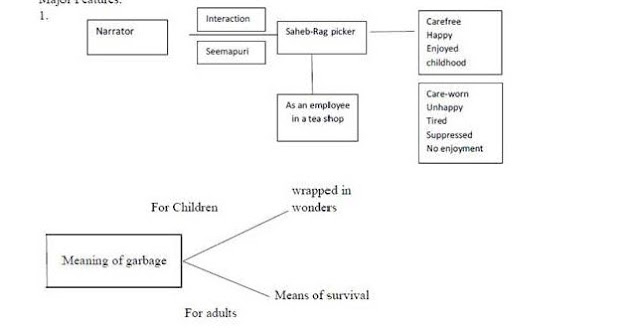A Photograph (Explanation)
Lines 1-4:
The cardboard shows me how it was
When the two girl cousins went paddling,
Each one holding one of my mother’s hands,
And she the big girl - some twelve years or so.
In these lines, the poet describes looking through a photo album, the pages of which seem to be
made of cardboard. The cardboard here refers to the thick stiff photo paper used in the pre-digital
photography era to store memories. She is looking at one picture in particular. It is a picture of
three girls, the tallest and eldest one in the middle and two younger and shorter ones on each side
of her. The girl standing in the middle is the poet’s mother, and the poet speculates that her
mother must have been around twelve years old when the picture was taken. The other two girls
are two of her mother’s cousins. Each of the cousins is holding on to one of the elder girl’s hands
for support. The picture was taken on a day when the three girls had gone paddling at the beach.
Lines 5-9:
All three stood still to smile through their hair
At the uncle with the camera. A sweet face,
My mother’s, that was before I was born.
And the sea, which appears to have changed less,
Washed their terribly transient feet.
In these lines, the poet further describes the condition in which the photograph of her mother and
her mother’s cousins was taken. The poet says that the uncle with the camera had been the one to
take the photograph. He had asked the three girls to pose for him and so they had. They had left
their wet hair open, and their hair was obscuring part of their faces. Through the film of hair
covering their mouths, one could see that they were smiling at the camera. However, one face in
the picture draws the poet’s attention to a greater degree than the other two faces. It is her
mother’s face that she is concentrating on, and she comments that the face was a sweet one. The
poet also says that the photograph was taken long before her own birth. Since then, her mother’s
face had of course changed. In contrast to this, the sea which lay along the beach where the
photograph was taken has changed to a lesser degree. That very sea washed the feet of the poet’s
mother and her two younger cousins the day the photograph had been taken. The poet calls those
feet “terribly transient” since all the girls in that photograph had stopped being so young and had
grown up since then. Their childhood didn’t last very long. Thus, the sea here symbolizes
eternity, against the infinite vastness of which human lives appear even more evanescent in
comparison.
Some twenty -thirty-years later
She’d laugh at the snapshot. “See Betty
And Dolly,” She’d say, “and look how they
Dressed us for the beach.” The sea holiday
In these lines, the poet stops looking at the photograph and recalls what her mother used to say
about the photograph. The poet isn’t sure whether it was twenty years after the photograph was
taken, or thirty years after it, but she remembers her mother telling her to look at how the
cousins, called Betty and Dolly, looked at that young age. The poet’s mother also asked her to
look at how their parents had dressed them up for a visit to the beach. Perhaps the plan to take
the photograph had been there all along.
Lines 14-15:
Was her past, mine is her laughter. Both wry
With the laboured ease of loss.
In these lines, the poet says that her mother used to consider the photograph as an inroad to the
past that she had left behind. On the other hand, the poet herself considered the memory of her
mother laughing as a relic of the past that she missed every day. In both cases, the memories of
the past made the two women contemplating and they feel disappointed as they tried hard to
come to terms with what they had lost.
Now she’s been dead nearly as many years
As that girl lived. And of this circumstance
There is nothing to say at all.
Its silence silences.
In these lines, the poet says that her mother has been dead for the past twelve years, that is, the
same number of years that was the age of her mother in the photograph she had been looking at.
The poet is able to think of her mother’s death, but she has no words with which to explain how
that death has affected her. The fact that the death has silenced her mother has also left her
speechless.


